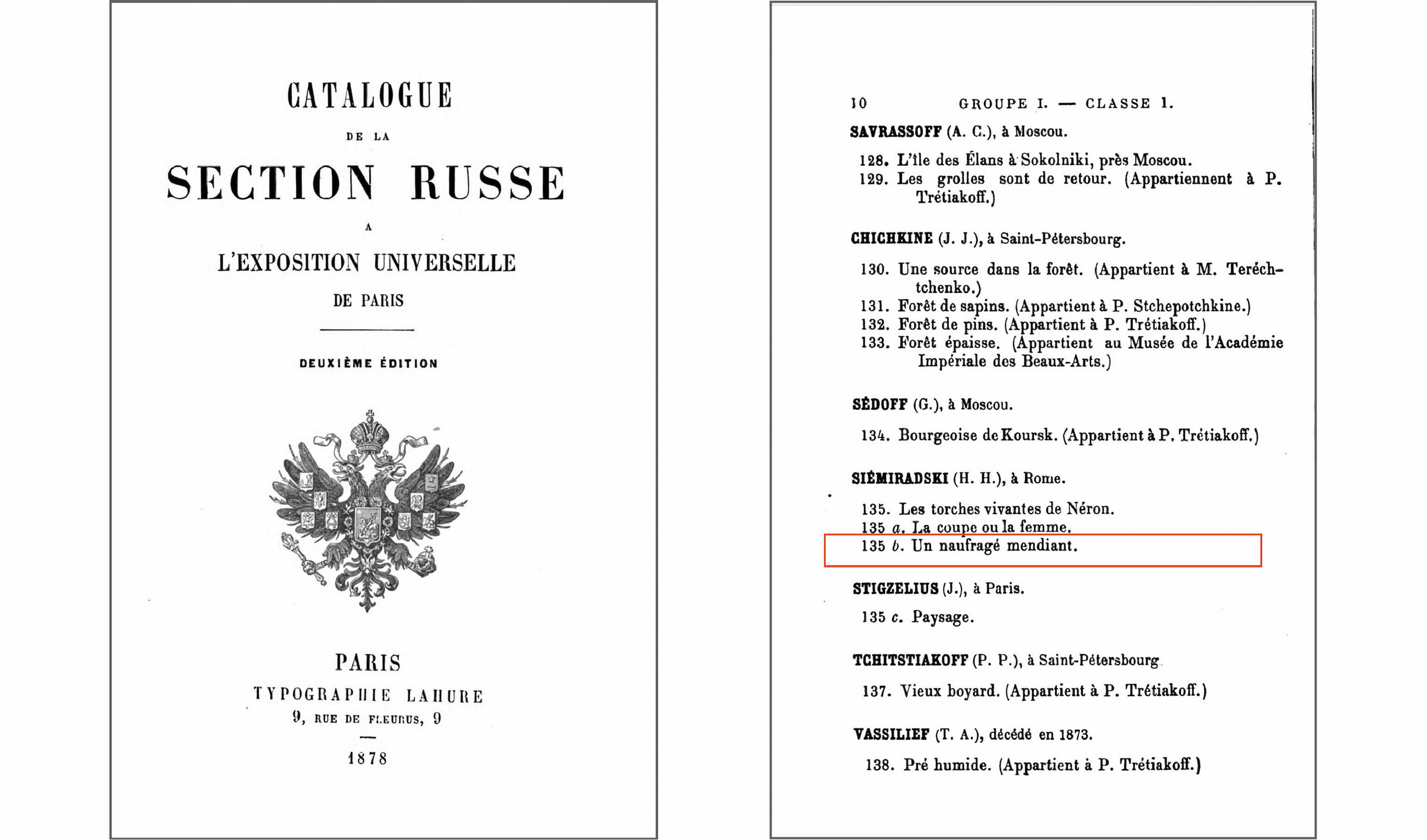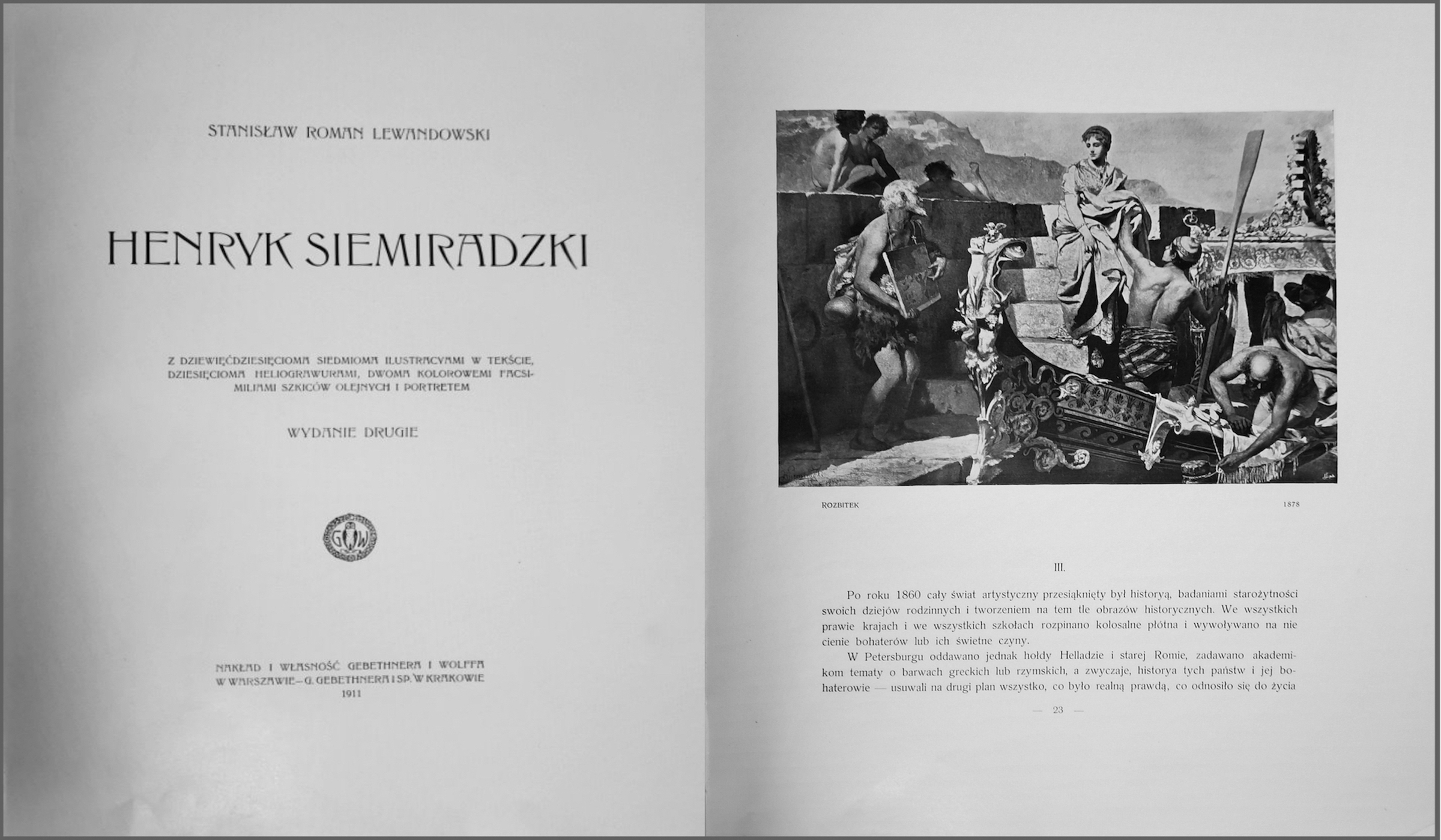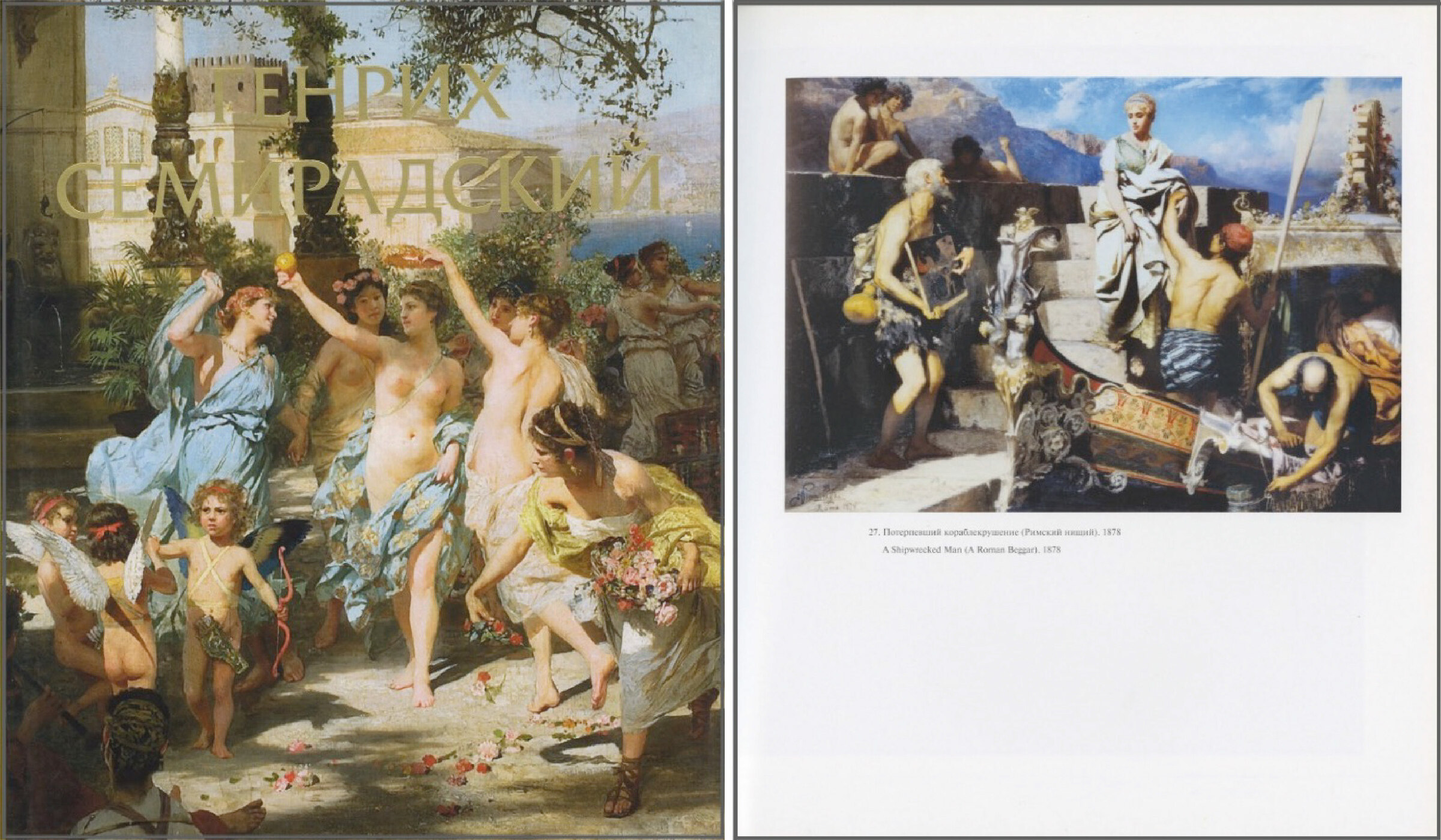Important Russian Art
1 December 2021

* 18. SIEMIRADZKI, HENRYK (1843–1902)
Un naufragé mendiant, signed, inscribed "Roma" and dated 1878, also further inscribed on the stretcher "Pour le tableau 'Un naufragé mendiant'".
Oil on canvas, 208 by 293.5 cm.
SOLD FOR 915,000 GBP
Provenance: Important 19th Century European Paintings, Drawings and Sculptures, Sotheby's New York, 31 October 2000, Lot 58.
Private collection, Europe.
Important Russian Art, Sotheby's London, 25 November 2013, Lot 7.
Private collection, Europe.
Authenticity of the work has been confirmed by the expert V. Petrov.
Exhibited: Exposition Universelle, Paris, 1878, No. 135b.
Literature: Catalogue de la section russe à l'exposition universelle de Paris, 1878, p. 10, No. 135b, listed as Un naufragé mendiant.
C. Lamarre, L. Léger, La Russie et l'Exposition de 1878, Paris, 1878, p. 141, mentioned in the text.
L’Exposition universelle de 1878 illustrée, No.160, Paris, 1878, p. 840, mentioned in the text.
Grand dictionnaire universel du XIXe siècle, vol. 17, 2nd supplément, Paris, 1890, p. 1844.
Dictionnaire universel des contemporains, vol. 2, Paris, Hachette, 1893, p. 1439.
S. Lewandowski, Henryk Siemiradzki, Warsaw, Gebethner & Wolff, 1911, p. 23, illustrated.
T. Karpova, Genrikh Semiradskii, St Peterburg, Zolotoi Vek, 2008, pl. 27, illustrated; pp. 131, 132, mentioned in the text.
Henryk Siemiradzki has gone down in the history of Russian and European art as an inspired master singing the praises of the ancient world. The artist’s extraordinary painting skill, his deep knowledge of Classical archaeology, and the ability to combine a dramatic flamboyance of execution with the inherent interest of the subject in a picture inevitably attracted viewers to his canvases.
Siemiradzki’s picture Un naufragé mendiant comes from the most brilliant period in his career. It was painted when one of his principal masterpieces, the seven-metre canvas Nero’s Torches, had just been completed, and he had become famous throughout Europe, with all kinds of awards being showered on him while his head was still full of creative plans for the future.
Siemiradzki undoubtedly had the highest regard for this composition and showed no qualms over displaying it to the public alongside the already famous Torches at the 1878 Exposition Universelle in Paris. The painting did not escape the critics’ notice either: they recorded their interest without being distracted by the colossal canvas next to it (C. Lamarre, L. Léger, La Russie et l'Exposition de 1878, Paris, 1878, p. 141). The artist’s contribution to the exhibition rewarded him with a complete triumph: he was presented with a medal of honour, and the Order of the Légion d'honneur was conferred on him. The academies of fine arts in Berlin, Stockholm and Rome made him a member, and Florence’s Uffizi gallery suggested that the artist should paint a self-portrait for its collection.
After a series of sensational exhibitions in Europe, Siemiradzki donated his monumental canvas depicting the execution of Christian martyrs to the city of Kraków for the National Art Museum that was then being created there, while the paintings Un naufragé mendiant and The Woman or the Vase, which had been shown together with it in Paris, ended up in private European art collections.
Both of them depict subjects drawn from the patrician “history of everyday life”, idyllic images of which were much appreciated by the artist’s contemporaries and show him to be an unsurpassed master of the short, but vivid narrative. Siemiradzki’s pictorial “short stories” from the ancient world were featured in the Hermitage collection assembled by Alexander II and Grand Duke Alexander Alexandrovich, the future Emperor Alexander III, they were eagerly purchased by aristocrats in Rome, Berlin and Paris, and they decorated bourgeois salons and the drawing rooms in the homes of writers.
Scenes of Imperial Rome that was nearing the twilight of its life, while still wallowing in luxury, not only came to be the hallmark of an artist who had forever linked his destiny with the “eternal city” and was rightly considered a subtle connoisseur of its history, archaeology and customs, but also exerted a substantial influence on theatrical performances and academic painting in the last third of the 19th century. Siemiradzki’s art captivated some outstanding members of other too, including the Austrian Hans Makart and the English artist Lawrence Alma-Tadema, the Pole Wilhelm Kotarbiński and the Svedomsky brothers, as well as other standard-bearers of the historical genre that was so popular in the late national art schools of the 19th century.
Unlike the master’s later canvases, which convey merely a sensual and colourful image of antiquity and an atmosphere of blissful dolce far niente idleness, the early examples of the “ancient idyll” are endowed with philosophical significance. Each of them is the vehicle of a literary allusion that merits its own narrative.
In a letter to St Petersburg, addressed to Andrei Somov, curator of the picture gallery at the Imperial Hermitage, Siemiradzki briefly described the subject background to his painting, which was later given the name Un naufragé mendiant: “The Vicissitudes of Fate depicts a Roman beggar posing as an unfortunate shipwrecked mariner from the ship of which (a picture) ... was hung over his chest” (T. Karpova, Genrikh Semiradskii, St Petersburg, 2008, pp. 131–132). The picture’s deeper theme is a reminder of the unpredictable and inexorable nature of human destiny. A beautiful young patrician woman is about to board an elegant barge, where a couch has been prepared for her beneath a canopy, decked with floral garlands and costly fabrics, to protect her from the southern sun. She has already given her hand to the suntanned servant boy so as to take the last step into the vessel when suddenly her gaze falls on an old beggar who is silently pointing to a picture depicting a disaster at sea and a mariner who has miraculously survived. He may be warning the maiden who is embarking on a dangerous voyage, or perhaps he is just seizing the opportunity to beg discreetly for alms, but nevertheless the motif of fate, with which his figure resonates, the very sense of a memento mori, conveys the special piquancy and poignancy of the aestheticised enjoyment of life to which all the artist’s work serves as a paean. So this premonition of a possibly dramatic dénouement is transformed into a call to enjoy the fleeting period of youth, exorbitant wealth and a deceptively calm sea, yet at the same time to remember the inevitable turning of “Fortune’s wheel” ...
One is struck by the ease with which Siemiradzki put this allegorical composition together, painted as it is with a light, virtuoso brushstroke. The three-metre easel canvas, which probably seemed to him like a piece of chamber art after Nero’s Torches, revealed the full extent of Siemiradzki’s talent as a master of monumental decorative painting. A sketch for this composition has been preserved in a private collection. What strikes one immediately is its pictorial freedom and compositional skill. Through the immediacy of the artist’s pictorial mastery, one can already see the virtuoso skill of composition, and the precision of the correlation of figures and dimensions, which remained practically unchanged in the final version. As he worked on the composition, Siemiradzki sought to create a semblance of real life for the event portrayed. Even so, the picture contains all the typical features of the pictorial system of late academic prescriptions. The scene is structured like a theatrical setting and unfolds against the backdrop of a mountainous landscape. The refined golden-bluish colour scheme, as well as the principle that the artist discovered for combining plein air effects with numerous details of “ancient luxury” and with complex foreshortenings of the figures, both nude and draped in fabric, create the impression of a huge, intricate still life where each object occupies a strictly defined place.
There are compelling reasons why the painting Un naufragé mendiant has always been regarded as a hallmark work for Semiradsky and has been repeatedly published in French encyclopaedias as one of the best illustrations of his œuvre (Grand dictionnaire universel du XIXe siècle, vol. 17, 2nd supplément, Paris, 1890, p. 1844; Dictionnaire universel des contemporains, vol. 2, Paris, 1893, p. 1439).
The present lot as listed in the Catalogue de la section russe à l'exposition universelle de Paris, 1878.
The present lot as illustrated in the 1911 publication.
The present lot as illustrated in the 2008 publication



Notes on symbols:
* Indicates 5% Import Duty Charge applies.
◎ Indicates the lot is located in Russia. Please note that permit for export from Russia has not been obtained. Successful bidders would collect their lots in Moscow after payment.
Ω Indicates 20% Import Duty Charge applies.
§ Indicates Artist's Resale Right applies.
† Indicates Standard VAT scheme applies, and the rate of 20% VAT will be charged on both hammer price and premium.